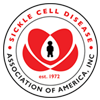Trusted Resources: Evidence & Education
Scientific literature and patient education texts
Rapidly progressive acute chest syndrome in individuals with sickle cell anemia: a distinct acute chest syndrome phenotype
source: American Journal of Hematology
year: 2016
authors: Chaturvedi S, Ghafuri DL, Glassberg J, Kassim AA, Rodeghier M, DeBaun MR
summary/abstract:Current definitions of acute chest syndrome (ACS) in sickle cell anemia (SCA) do not account for rapid progression of respiratory compromise. In this two-center retrospective cohort study, we tested the hypothesis that in children and adults with ACS and respiratory failure (=<24 hours after onset of respiratory symptoms) have a distinct ACS phenotype associated with multiorgan failure when compared to those with ACS that have a more subacute and protracted course. We identified 173 individuals (97 children <20 years and 76 adults >=20 years) with SCA and at least one episode of ACS. Only one ACS episode was considered per individual. Rapidly progressive ACS occurred in 21% (n = 16) of adults, but only 2.1% (n = 2) of children. Compared to adults without rapidly progressive ACS, adults with rapidly progressive ACS more frequently developed acute kidney injury (68.8% vs. 3.3%, P < 0.001), hepatic dysfunction (75.0% vs. 15.0%, P < 0.001), altered mental status (43.8% vs. 11.7%, P < 0.001), multiorgan failure (93.8% vs. 10%, P < 0.001), and death (6.3% vs. 0%, P = 0.05). Clinical and laboratory covariates that were evaluable on the first day of respiratory symptoms were evaluated to identify predictors of rapidly progressive ACS. On multivariable analysis, decline in platelet count at presentation was the only predictor of rapidly progressive ACS [odds ratio 4.82 (95% CI 1.20-19.39), P = 0.027]. In conclusion, rapidly progressive ACS is a distinct phenotype that occurs more frequently in adults, is preceded by thrombocytopenia, and is associated with multiorgan failure.
organization: Vanderbilt University, Nashville; Academic Medical Center at the University of Amsterdam; Mount Sinai Hospital, New York; Rodeghier Consultants, ChicagoDOI: 10.1002/ajh.24539
read more full text
Related Content
-
Opioid utilization patterns in United States patients with sickle cell diseaseSickle cell disease (SCD) is the most co...
-
Sickle Cell Anemia Treatment & ManagementThe National Institutes of Health advise...
-
Tammuella (Tami) Singleton, MDDr. Singleton serves as a pediatric hema...
-
Hemoglobinopathy Counselor Training Course – VIRTUALUPDATE! 2020 Hemoglobinopathy Counselor ...
-
Nirmish Shah, MDAs director of Duke’s sickle cell tran...
-
McCourty twins praise aunt who lost battle with sickle cell disease for ‘defying the odds’Twin brothers Jason and Devin McCourty s...
-
Study Confirms Safe Use of Opioids for Pain Control in Sickle Cell DiseaseThe most common cause of hospital admiss...
To improve your experience on this site, we use cookies. This includes cookies essential for the basic functioning of our website, cookies for analytics purposes, and cookies enabling us to personalize site content. By clicking on 'Accept' or any content on this site, you agree that cookies can be placed. You may adjust your browser's cookie settings to suit your preferences. More Information
The cookie settings on this website are set to "allow cookies" to give you the best browsing experience possible. If you continue to use this website without changing your cookie settings or you click "Accept" below then you are consenting to this.




 +myBinder
+myBinder
